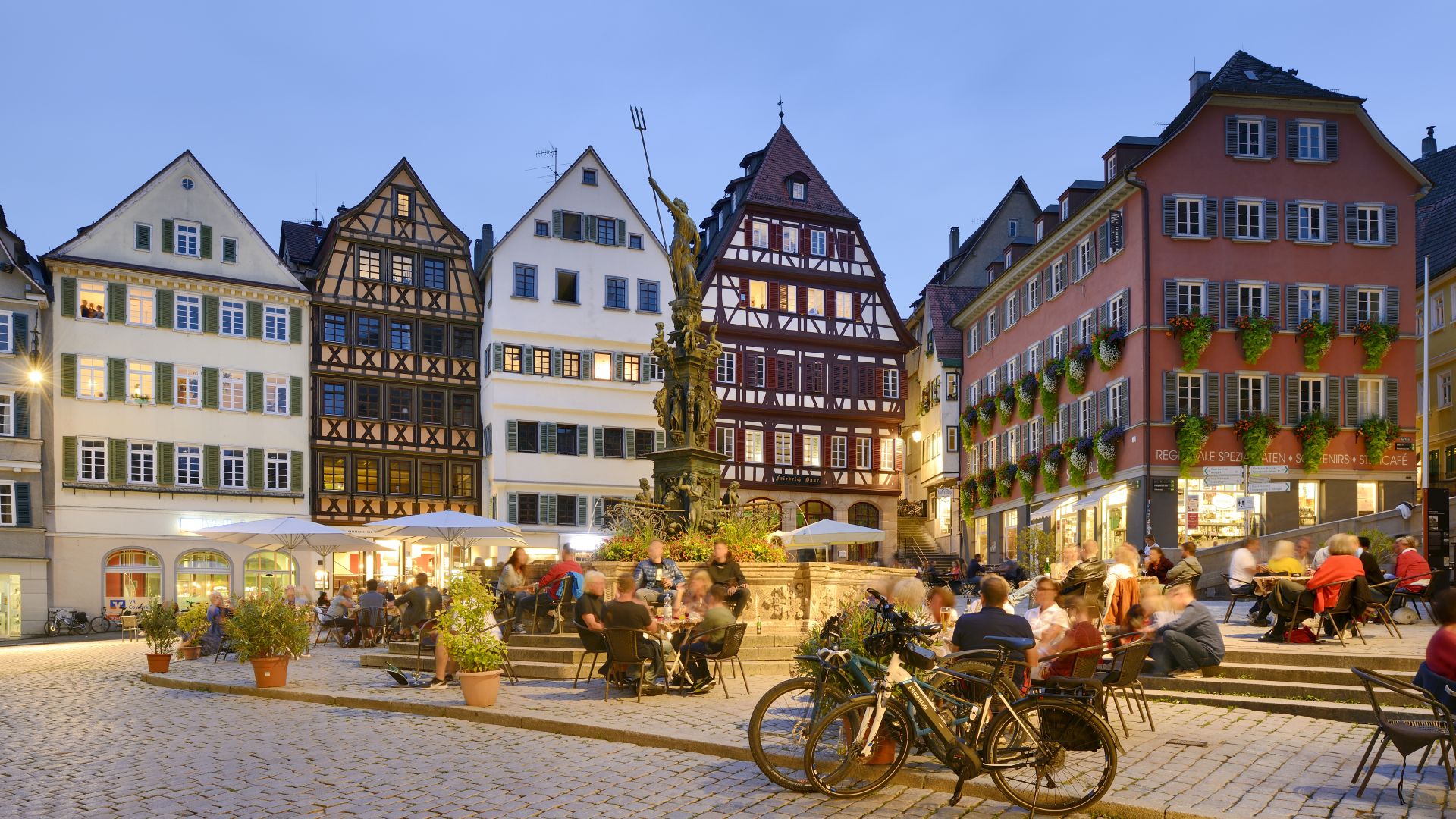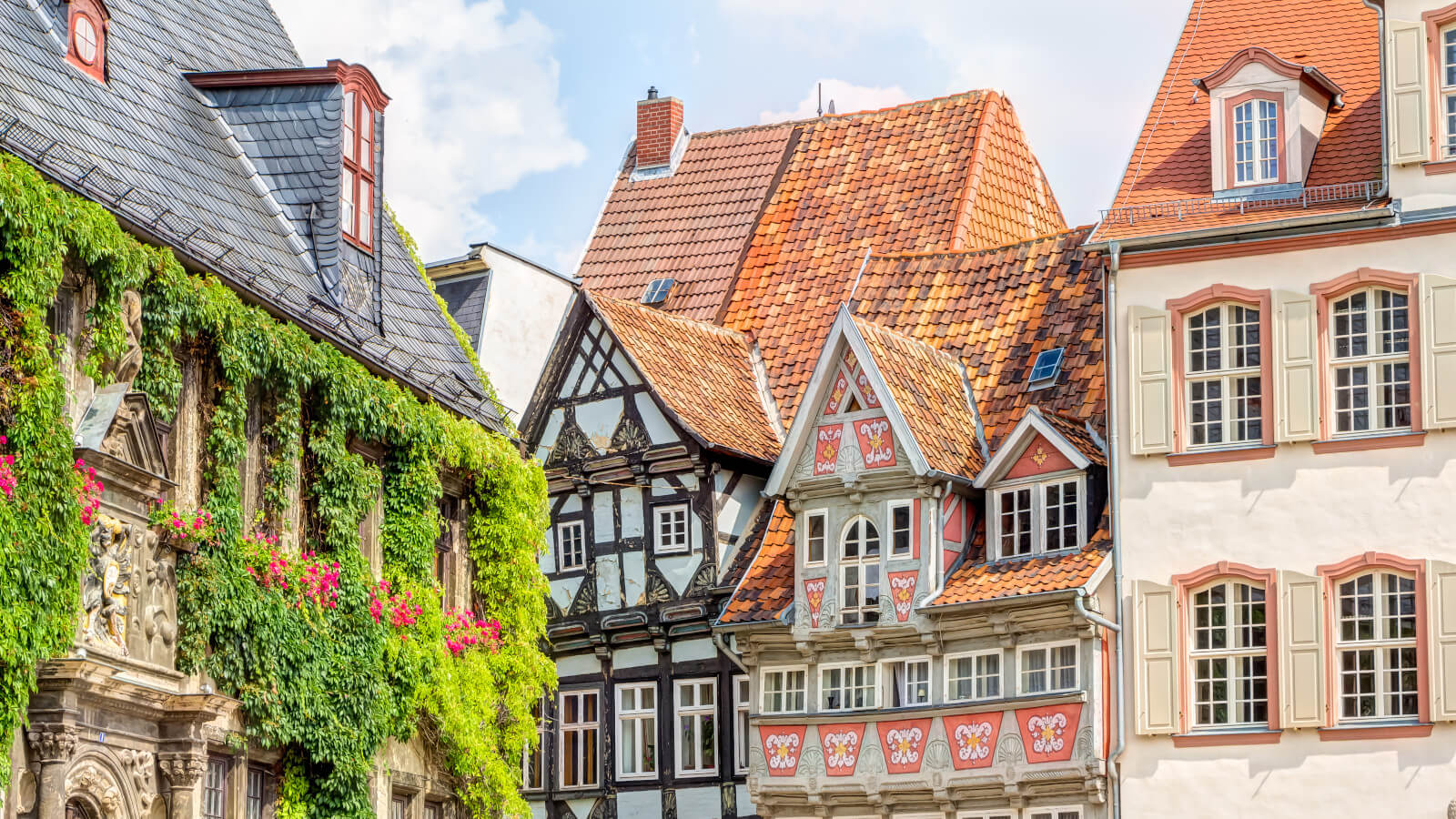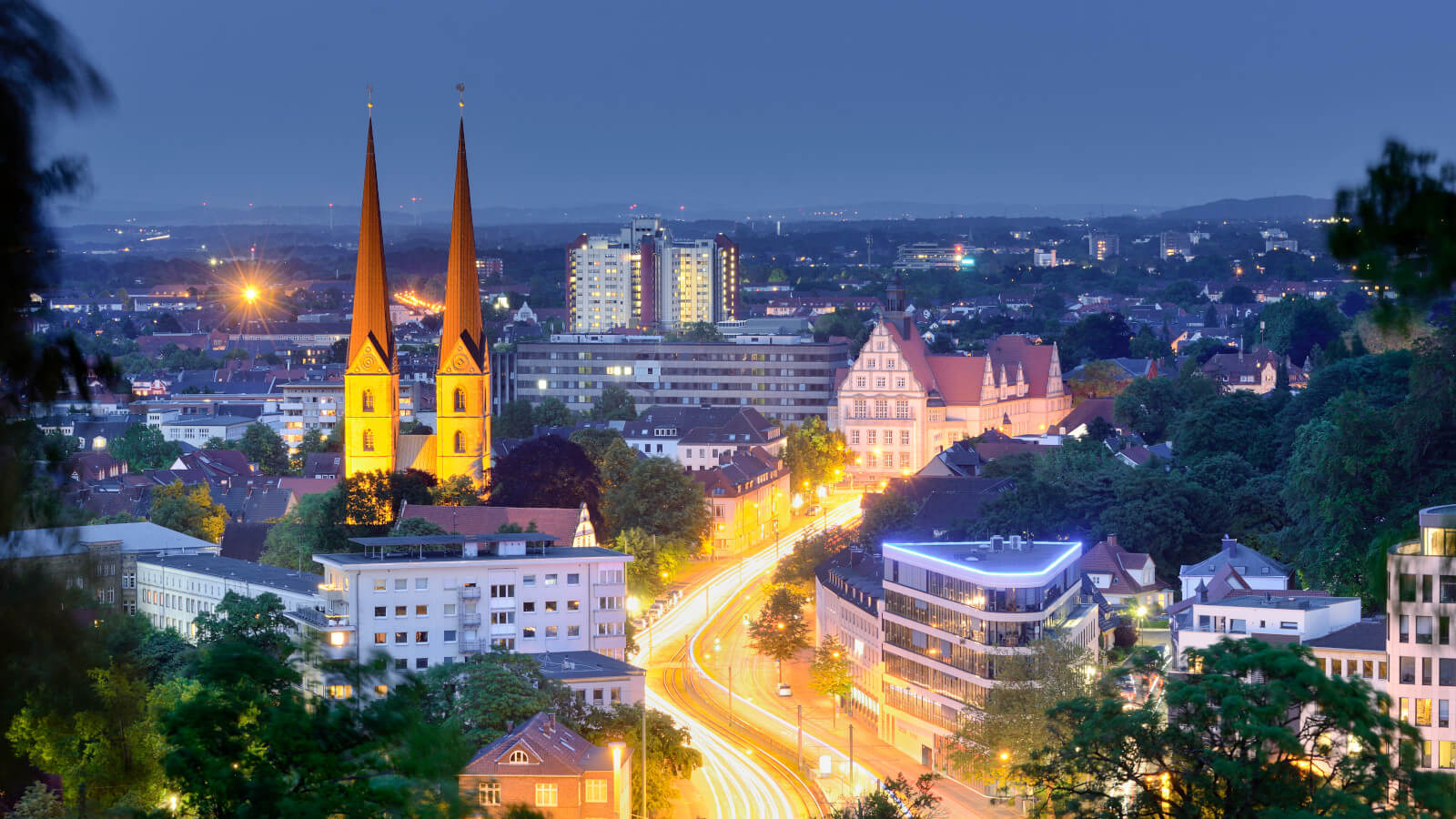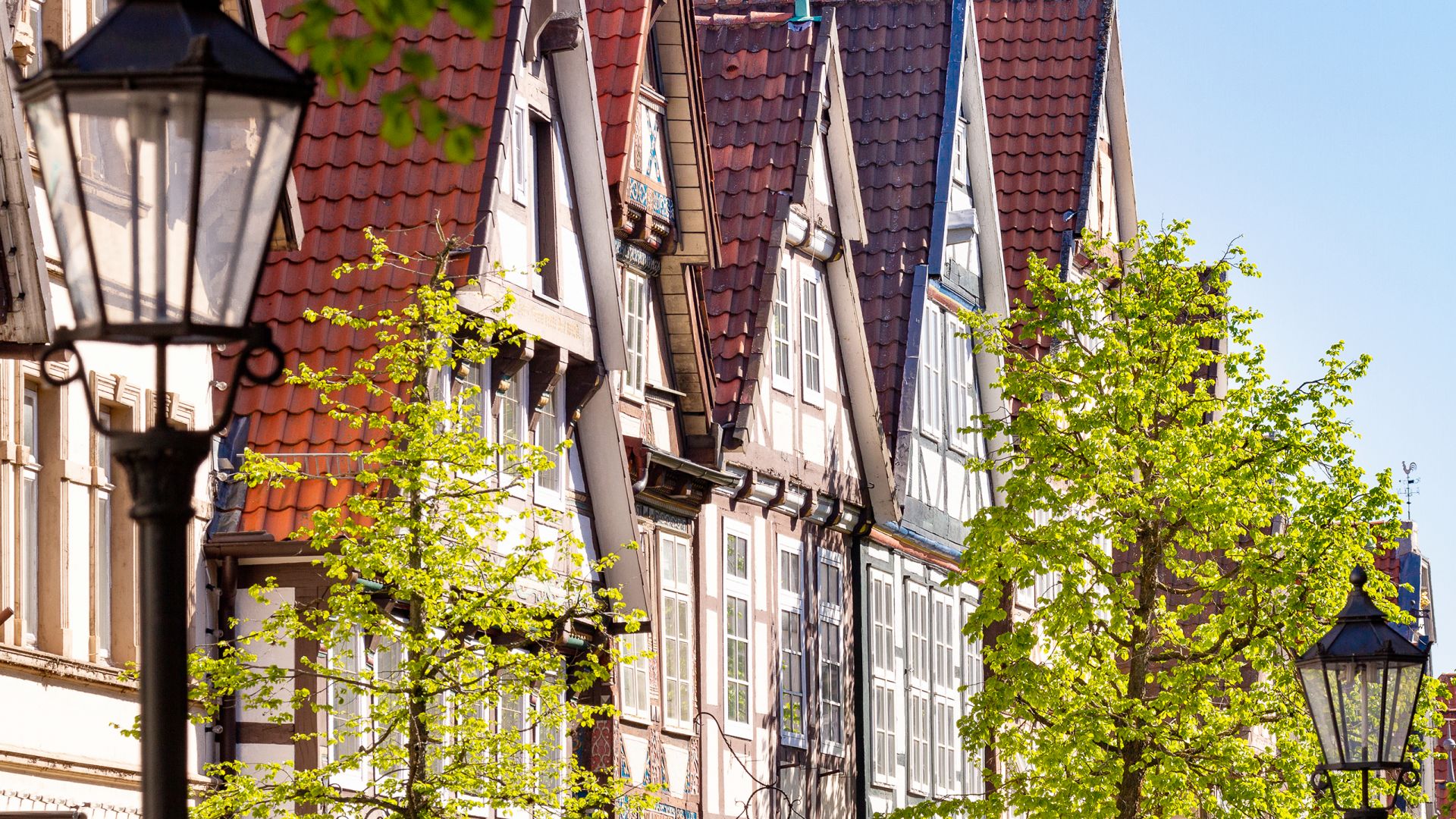Cities & Culture
Towns with splendid half-timbering: historic head-turners
Colourful facades, crooked gables, wooden beams, golden inscriptions, ornaments and carvings: some half-timbered houses are true works of art and shape entire villages and Old Towns with their charm.
Tübingen: youthful flair in old alleyways
 Tübingen: Marketplace in the evening
©DZT (Francesco Carovillano)
Tübingen: Marketplace in the evening
©DZT (Francesco Carovillano)
Across Germany, the average age is 44.5 years – in Tübingen, on the Neckar river, it's 40. That makes it one of the youngest cities in the country. The reason for this: almost a third of the population are students, the majority of whom attend the Eberhard Karls University – which in turn is not young at all, as it is one of the oldest universities in Europe with a history spanning more than 540 years. Many colourful buildings in the Old Town also span several centuries. One of the most popular photo spots is probably the four-storey town hall built in the Renaissance style: colourful sgraffito paintings on the outer façade, above it the ornate astronomical clock, in front of it the Neptune fountain on the market square. This is lined with a row of pretty half-timbered houses, more of which can be found in the alleys around it, including the large convent near the moat and the 800-year-old Stiefelhof. Wandering between here, Hohentübingen Palace and the banks of the Neckar, you'll have to climb quite a few metres in altitude. But as we all know, that keeps you young!
Quedlinburg: half-timber champion, world heritage site, living museum
 Timber framing houses Quedlinburg old town, Germany
©iStock (mije_shots)
Timber framing houses Quedlinburg old town, Germany
©iStock (mije_shots)
The former royal palace and Hanseatic city on the north-eastern edge of the Harz Mountains looks back on over 1,000 years of history. So the gems in the Stiftskirche's cathedral treasury quite literally reflect the splendour of the Ottonian imperial household. But the greatest treasure of this small town in Saxony-Anhalt is the more than 2,000 well-preserved half-timbered buildings constructed from the 14th to 19th centuries. You won't find a higher number of half-timbered houses in such a small area anywhere else in Germany! The old town panorama from the collegiate church of St Servatius on the castle hill provides a good overview – as does a stroll through the cobbled streets afterwards. It is like wandering through a living museum: houses crowd up against each other, sometimes the cantilevers on the façades almost touching. Vines entwine on the old walls that house small shops and cafés. It may sound chintzy, but it's true.
Bielefeld: history in the countryside
 Bielefeld: View of the city
©DZT (Francesco Carovillano)
Bielefeld: View of the city
©DZT (Francesco Carovillano)
"Bielefeld – doesn't actually exist anywhere." This satirical conspiracy plot only causes a yawn in the north-east of North Rhine-Westphalia. Those in the know, however, know that the city at the foot of the mighty Sparrenburg has a lot to offer. For example, the Ravensberger Spinnerei site – once the European market leader of flax spinning – is home to museums, cinemas and open-air spaces, while the venerable Waldhof hosts contemporary exhibitions by the well-known Kunstverein. The area around the Alter Markt (Old Market) in the heart of the Old Town, which is characterised by half-timbered houses, is well loved by history enthusiasts. The Square enchants visitors with impressive buildings and historic facades, such as Bankhaus Lampe. The Crüwell House, with its 7,000 Delft tiles, is also worthy of praise – this is a magnificent Weser Renaissance building. The Teutoburger Forest, which runs through the centre of Bielefeld, is also magnificent, and covers about one fifth of the city's entire area. Where else can one find such a thing?
Celle: clusters of half-timbered houses
 Celle: Zöllnerstraße with half-timbered houses
©Fotostudio Loeper (Ulrich Loeper)
Celle: Zöllnerstraße with half-timbered houses
©Fotostudio Loeper (Ulrich Loeper)
Like pearls on a string, the Lower Saxony Celle,nicknamed "southern gateway to the Lüneburg Heath",has half-timbered houses lined up along the streets of the Old Town. There are more than 500 of them, most of which have been extensively restored and are protected as historic monuments, which together form a cohesive townscape and one of the largest coherent half-timbered collections in the world. Houses which are particularly historic still have a passage through to the courtyard, where the farmers of Celle once brought in their harvest. Many of these medieval buildings are home to shops, cafés and restaurants, so you can admire the architectural gems - including the especially beautiful Hoppener Haus from 1532, decorated with mythical creatures, and the Alte Lateinschule in the delightful Kalandgasse - not only from the outside, but also step inside. Visitors can and should also visit the nearby French Garden and, even more so, the Renaissance and Baroque style Celle Castle.